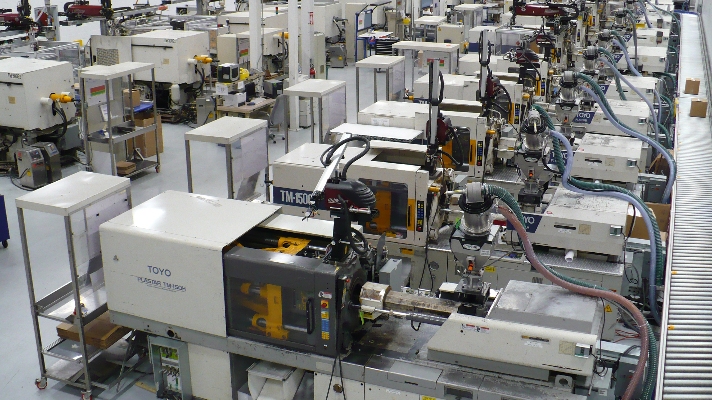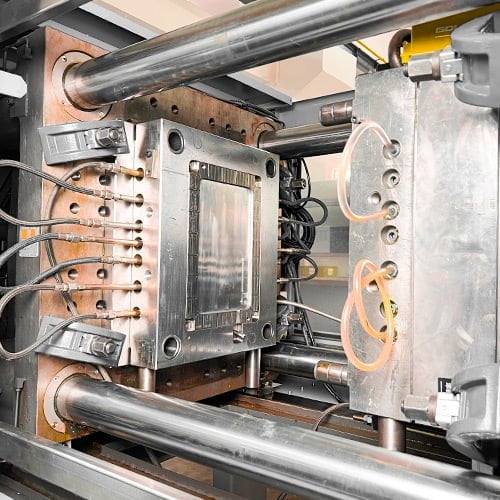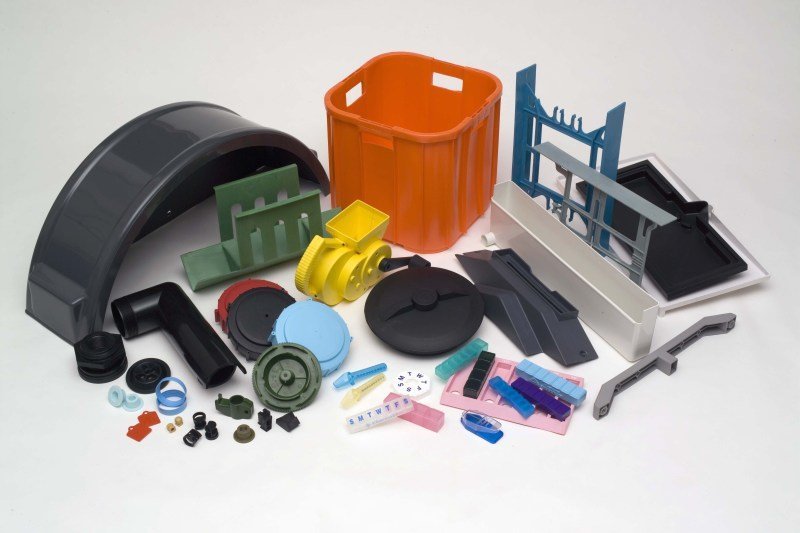The Benefits of Using Plastic Injection Molding for Customized Parts Manufacturing
The Benefits of Using Plastic Injection Molding for Customized Parts Manufacturing
Blog Article
Understanding the Basics of Plastic Injection Molding Procedures
Plastic injection molding offers as a foundation of modern production, offering a systematic strategy to producing complex elements with precision. Exploring these vital components could expose how even minor modifications can lead to significant improvements in production end results, increasing questions regarding the possibility for innovation in this recognized procedure.
What Is Plastic Shot Molding?
Plastic injection molding is a commonly made use of production procedure that transforms thermoplastic and thermosetting materials right into accurate and complex shapes. This method is preferred for its ability to create high volumes of identical components with phenomenal precision, making it a vital method in different markets, including auto, customer products, and clinical tools.
The process involves melting the selected plastic product and infusing it right into a mold and mildew under high pressure. The mold and mildew, developed to the specs of the desired component, enables the molten plastic to materialize as it strengthens and cools. When the material has actually set, the mold and mildew is opened up, and the finished part is expelled.
Plastic shot molding uses several advantages, consisting of minimized waste, uniformity in production, and the capacity to include detailed styles that might be testing with other producing methods. In addition, it supports a wide variety of materials, each supplying special buildings that can be customized for certain applications. As industries proceed to innovate, plastic shot molding stays at the forefront, allowing the advancement of sophisticated items that meet developing customer demands.
The Shot Molding Process
The shot molding procedure is an advanced strategy that involves numerous vital stages to produce premium plastic components. Plastic pellets are fed into a warmed barrel where they are melted into a thick fluid. This molten plastic is then infused under high stress into a precision-engineered mold, which forms the material right into the desired kind.
When the mold is filled up, the plastic is allowed to strengthen and cool, taking the form of the mold and mildew tooth cavity. Air conditioning time is vital, as it impacts the cycle time and the last buildings of the shaped component. After adequate air conditioning, the mold and mildew opens, and the ended up element is expelled using ejector pins.

Products Used in Injection Molding
Numerous products can be made use of in the injection molding procedure, each offering special buildings that deal with certain applications. One of the most commonly made use of materials include thermoplastics, thermosetting plastics, and elastomers.

Thermosetting plastics, like epoxy and phenolic resins, undertake a chemical modification throughout the healing process, leading to an inflexible, inflexible structure. These products are suitable for applications calling for high heat resistance and architectural stability, usually utilized in electric insulators and automotive parts.
Elastomers, including silicone and rubber-based materials, supply flexibility and strength. Their distinct residential or commercial properties make them suitable for applications that demand elasticity, such as seals and gaskets.
In addition, specialty products like bio-based plastics and composites are getting grip for their ecological advantages and enhanced efficiency attributes, expanding the scope of injection molding applications in different sectors. Understanding the residential or commercial properties of these products is critical for choosing the proper type for particular jobs.
Benefits of Shot Molding
Injection molding stands apart as a highly effective production procedure that provides various benefits for generating complex get rid of precision. One of one of the most considerable benefits is the capability to create elaborate styles that would be difficult or difficult to attain with other techniques (Plastic Injection Molding). The procedure enables limited resistances and detailed functions, ensuring high-grade parts
Additionally, injection molding is known for its rapid production abilities, making it an ideal selection for high-volume production. Once the mold is developed, components can be generated promptly, minimizing lead times and boosting general productivity. This effectiveness not only lowers production prices however additionally gives a competitive side out there.
The adaptability of materials utilized in shot molding better improves its charm. A large range of thermoplastics and thermosetting polymers can be used, allowing manufacturers to pick materials that ideal meet their certain requirements, including adaptability, stamina, and warm resistance.
Furthermore, the process reduces waste, as excess product can typically be recycled and recycled. This sustainability element adds to a reduced environmental effect, making injection molding a responsible manufacturing selection. On the whole, the benefits of shot molding make it a recommended method for several industries.
Elements Affecting Item Quality
While various aspects can affect item top quality in shot molding, recognizing these aspects is critical for attaining optimum outcomes. Key facets include product choice, processing criteria, and mold and mildew design.
Material choice plays an important function, as different polymers show distinct buildings that impact flowability, strength, and thermal stability. Insufficient product selection can lead to flaws such as warping or incomplete dental filling.
Handling specifications, including cycle, temperature, and stress time, have to be thoroughly controlled. Variations in these setups can result in inconsistencies in component dimensions and surface finish. Excessively high temperatures may trigger deterioration of the polymer, while inadequate stress can result in brief shots.
Mold and mildew design is just as essential, as it establishes the circulation of the molten plastic and the cooling procedure. Improperly designed molds might result in irregular Bonuses cooling prices, leading to dimensional mistakes and recurring tensions.

Conclusion
Finally, plastic shot molding offers as a crucial manufacturing process that makes it possible for the effective manufacturing of high-quality elements. Mastery of the injection molding process, consisting of the understanding of materials and the impact of various factors on product high quality, is essential for attaining optimum outcomes. The advantages of this technique, such as cost-effectiveness and style versatility, further underscore its importance across multiple sectors, strengthening its status as a preferred selection for high-volume manufacturing.
Plastic injection molding offers as a cornerstone of modern-day production, offering a systematic strategy to creating complex parts with accuracy.Plastic shot molding supplies a number of advantages, consisting of reduced waste, consistency in manufacturing, and the ability to incorporate detailed styles that may be testing with other making approaches (Plastic Injection Molding). As sectors continue to introduce, plastic injection molding continues to be at the forefront, making it possible for the click to read advancement of advanced products that meet progressing customer demands
The shot molding procedure is an advanced strategy that involves several find out here now key phases to produce premium plastic parts.In conclusion, plastic shot molding serves as a crucial production procedure that enables the efficient production of top notch components.
Report this page